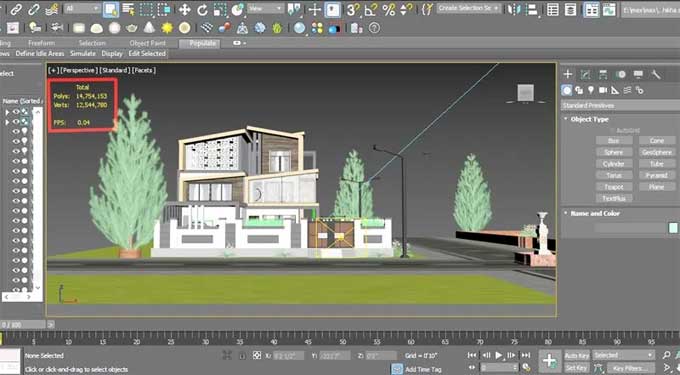Vray and 3ds Max Tips For a More Realistic Rendering

3ds Max and Vray is a computer graphics tool that allows you to create 3D models, animations, and digital photographs. It's one of the most well-known applications in the computer graphics business, and it's well-known for having a rich toolset for 3D artists. The most comprehensive 3D rendering program for artists and designers is V-Ray for 3ds Max.
The Tips in order to make 3ds Max and Vray are as follows:
It is not necessary to be perfect to be realistic
The most obvious sign that an image is a 3D render is that it is overly flawless. The images, chairs, and tables in this photograph are all perfectly straight. If you tried, there is no way you could achieve this in reality.
Rotating and moving things a little bit before rendering is a good idea. It will rotate by 1 degree or 5 degrees, depending on whether Snaps by degree is on or off. Turning this off and making very small rotations and movements now will be a good idea.
If you want to experiment with adding additional chaos to your 3D renderings, watch the Physics video, in which we look at stacking objects and utilising gravity, wind, and explosions to randomise item placements.
A similarity but a difference
In the end, you will realize that all the models are exactly the same when you get them lined up. As we can see in this example, each chair has the same wood grain.
Even if the objects are instanced, this is a simple problem to tackle. Enter the material editor. Using the eyedropper, collect the substance. Incorporate a VRayUVWRandomizer map. Plug the same one into each map. You may pick by name, and the texture will be offset based on the name. We don't want the texture to rotate, therefore disable UV Rotation. And now each chair will have a different texture.
Objects with hard edges should be reduced
Hard edges are another indication that something in a 3D model is real. As a default, the edges of 3D models are hard. There are a couple of ways we can overcome this. Using the Chamfer modifier is the first method.
A map can also be used in the material. VrayEdgeTex Map should be added. As a result, the corners are rounded for us, making the model more photorealistic.
Try to make it uncommon:
There is no such thing as a flat surface in life, so your 3D models should be no different. If you want to give your mesh some variation, you can quadrify it. You will then be able to apply a noise modifier to your object after adding some additional faces. This one is so small that you hardly notice it, so don't overdo it.
Try something related to organic:
We can soften up things other than only solid objects. It used to be difficult to create realistic-looking 3D representations of natural items like trees, plants, flowers, pillows, and textiles since there were so few polygons available.
But right now, we have more than enough to make everything appear as authentic as possible. There is no longer a reason not to include a few organic objects in your scene thanks to Chaos Cosmos.
Realistic details can be added by including a throw and placing it using an FFD modifier. Or you could accomplish the same thing by using the cloth modifier.
In relation to the textile modifier, we may combine it with cushions and place them on the sofa. If we do this instead of merely trying to place it, it will sit more comfortably.
Adding a touch of reality:
If you want your 3D models to look realistic, it's crucial to keep things real. This applies to cameras, materials, and lighting. You will obtain real-world outcomes if you apply limitations from the real world to your 3D photos. Our virtual environment will appear more lifelike the more closely it resembles reality.
To learn more, watch the following video tutorial.
Video Source: ArchViz Studio
This is why it makes sense to use materials that are scaled for the real world. Keep Real World turned on in the V-Ray Asset Browser. Then everything will be scaled correctly if we build an object and apply a UVW Mapping modifier with the real-world turned on. This is a really useful habit to get into if you want photorealistic images.
The ability to create photorealistic images depends on a variety of factors, including quality materials, realistic details, and image resolution. Although advanced graphics and software are no longer required to create cutting-edge photorealistic 3D images.



